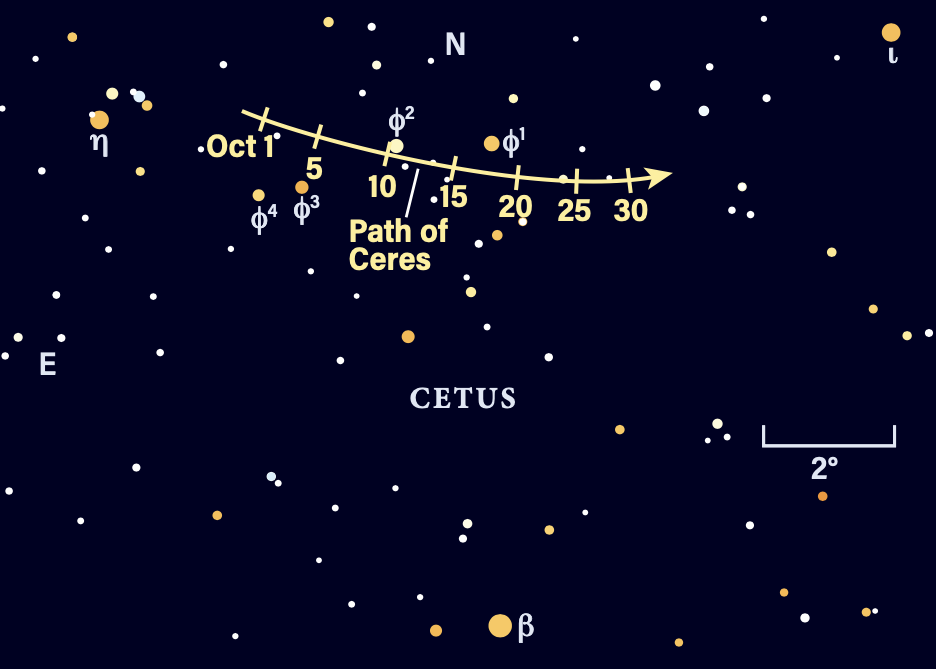Back to Article List
Dwarf planet 1 Ceres is passing close by a star this evening. In just an hour or two, you can watch the main-belt world’s motion by eye.

Ceres spends all month within a short distance of several bright stars, aiding in its identification. Credit: Astronomy: Roen Kelly
On October 27th, Jupiter will be observable south of Pollux in Gemini at magnitude –2.2, with East Coast observers having the opportunity to witness an occultation of its moon Io between approximately 12:10 A.M. and 3:45 A.M. EDT.
The dwarf planet 1 Ceres will be visible at 8th magnitude within the constellation Cetus, accessible to observers utilizing binoculars or small telescopes.
Ceres’s discernible motion relative to background stars, specifically its transit from east to west south of a proximate field star, can be observed over a period of one to two hours.
The article provides specific ephemeris data for October 27th, including sunrise, sunset, moonrise, moonset, and a 45% waxing crescent Moon phase, calculated for 40° N 90° W.
Looking for a sky event this week? Check out our full Sky This Week column.
October 27: Jupiter passes south of Pollux
Jupiter stands south of Pollux in Gemini, rising in the east during the early-morning hours. The gas giant can’t be missed, glowing at magnitude –2.2 to the lower right of Castor and Pollux, the Twins’ heads.
Aim your telescope at Jupiter and East Coast observers can catch a disappearing act as Io, off to the planet’s west, disappears just after 12:10 A.M. EDT, winking out as it passes into Jupiter’s long, dark shadow. Io will reappear from occultation about 3:45 A.M. EDT, when it pops into view off the northeastern limb.
Tonight is an excellent opportunity to watch dwarf planet 1 Ceres move relative to the background stars of Cetus the Whale. A bonus: You can do so even if all you have is binoculars!
Ceres is now 8th magnitude, within range of binoculars and small scopes. By 9 P.M. local daylight time, it is 30° high in the southeast, located 7° above 2nd-magnitude Diphda (also called Deneb Kaitos and cataloged as Beta [β] Ceti) and about 2° west of magnitude 4.8 Phi1 (φ1) Ceti.
Ceres is passing particularly close to a similarly bright field star — it is the southernmost light of the two. Over the course of an hour or two, you can notice their relative positions change as Ceres slides from east to west south of the star.
Sunrise: 7:25 A.M.
Sunset: 6:02 P.M.
Moonrise: 1:56 P.M.
Moonset: 11:14 P.M.
Moon Phase: Waxing crescent (45%)
*Times for sunrise, sunset, moonrise, and moonset are given in local time from 40° N 90° W. The Moon’s illumination is given at 10 P.M. local time from the same location.
